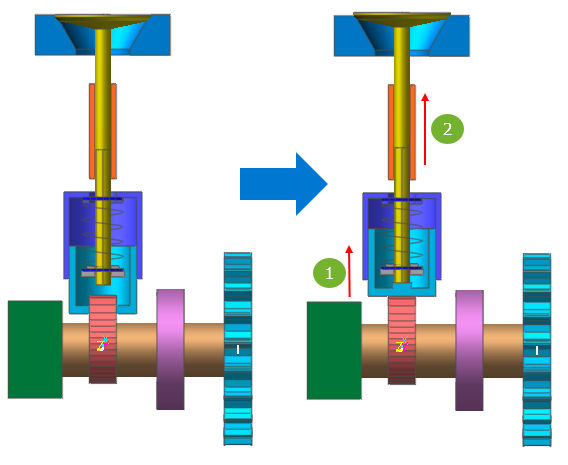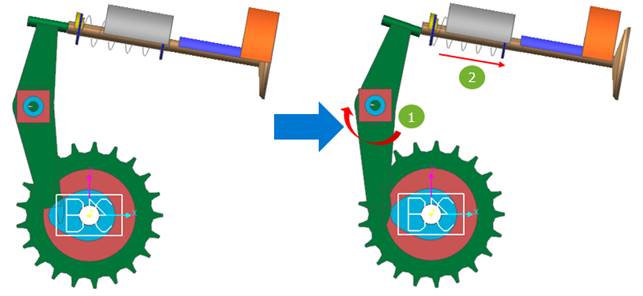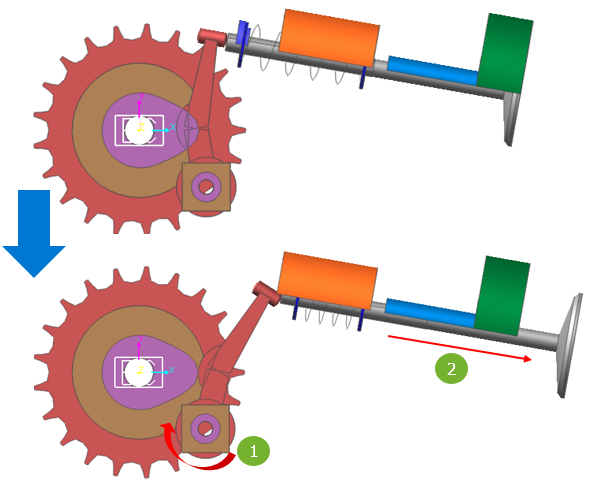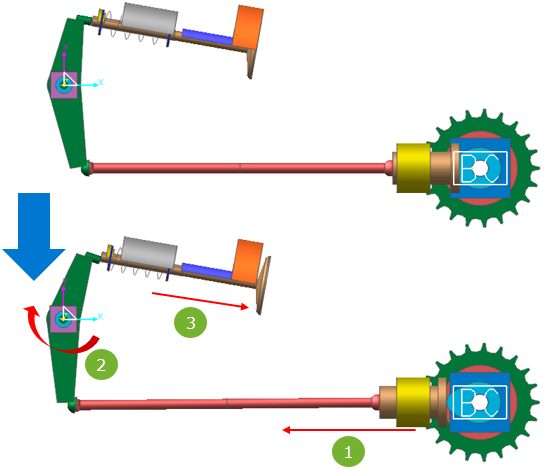
Auto Positioning helps to user to positioning components after creating the valve system. In additional, positioning of components is based on the Cam in the valve system.

Figure 1 Auto Positioning icon of the Valve group in the Valve tab
Direct-acting Type

Figure 2 Auto Positioning in Direct-acting type in valve system
1. Lifter which closes to Shaft is positioned by cam position. Lifter which closes to Shaft should be contact with Cam without interruption. In additional, Cam and Lifter which closes to valve seat are fixed.
2. Valve is positioned by positioned Lifter which closes to shaft. And Spring in valve system is compressed or released by positioning Lifter which closes to Shaft.
Center-pivoted Arm Type

Figure 3 Auto Positioning in Center-pivoted Arm type in valve system
1. Rocker Arm is rotated by cam position. Slipper which closes to Cam should be contact with Cam without interruption.
2. Valve is positioned by Adjust Screw of rotated Rocker Arm. And Spring in valve system is compressed or released by Adjust Screw of rotated Rocker Arm.
End-pivoted Arm Type

Figure 4 Auto Positioning in End-pivoted Arm type in valve system
1. Swing Arm is rotated by cam position. Slipper which is on center of Swing Arm should be contact with Cam without interruption.
2. Valve is positioned by Adjust Screw of rotated Swing Arm. And Spring in valve system is compressed or released by Adjust Screw of rotated Swing Arm.
Push-rod & Center-pivoted Arm Type

Figure 5 Auto Positioning in Push-rod & Center-pivoted Arm type in valve system
1. Push-rod is positioned by Lifter which closes Cam. Lifter should be contact with Cam without interruption.
2. Push-rod Holder which is on Rocker Arm is driven by positioned Push-rod. Rocker Arm is rotated by Push-rod Holder.
3. Valve is positioned by Adjust Screw of rotated Rocker Arm. And Spring in valve system is compressed or released by Adjust Screw of rotated Rocker Arm.